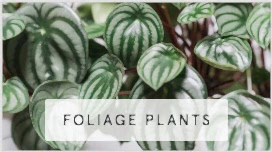You often hear about houseplants that thrive in low-light conditions, and there's no shortage of candidates if your home isn't well-lit. However, If you have rooms with access to ample sunshine, you'll want to take advantage of that when cultivating your indoor jungle by choosing plants that thrive in direct sunlight.
That's good news if you want to populate a room with expansive floor-to-ceiling windows or have a space with an especially large window that floods the room with light all day. Plants can transform the room, but you must ensure the ones you place there perform well.
For plants that prefer minimal or indirect sunlight exposure, there's a significant risk that the vegetation may suffer sunburn or experience scorched leaves. This is why it's crucial to choose only plants that benefit from direct light for successful growth inside the home.
The Real Meaning of Direct Light
There's a difference between "bright" light and "direct" light. If your plants prefer bright light, they can safely be exposed to high levels of bright but indirect light without the risk of their leaves burning. Plants that favor indirect lighting typically grow out in the wild. They're usually exposed to sunlight through the gaps in the leaves that sway above them.
In your home, that might mean that the light flows through the windows and shines on the plants — but the plants aren't actually near the windows. In cases where the plant is situated near the window, the glass may be treated with a film to reduce the direct light. This ensures that while the plant receives the illumination it needs, it doesn't get burned.
Direct light, by contrast, provides your indoor garden with unfiltered illumination. The light streams directly onto the plants and typically comes from either the west or south points. When you position your plants in these parts of the home, you can be confident they'll receive the exposure they need to thrive for up to four hours (and sometimes more) a day.
Plants That Benefit From Direct Light
Some plants perform best when they're exposed to continuous bright light. There are also instances when those plants might even thrive in low-light conditions, allowing you some flexibility when determining how best to place them in your home. Here are some varieties to keep in mind.
Snake Plant
You may know the snake plant as a social media darling, often found splashed on feeds adding a bit of striking, lavish beauty to virtually any room from the kitchen to the bedroom. What's especially appealing about snake plants is that they are virtually impossible to mishandle — that means even if you don't have a green thumb, your snake plant will thrive.
Still, the snake plant generally prefers an abundance of sunshine. While it can tolerate lower levels of light, it won't grow unless it's exposed to a significant amount. The more sunlight, the more it will flower. The snake plant can handle at least six hours daily of direct exposure. Pay attention to the condition of the leaves, as they can alert you to signs of overexposure to light. They may begin to brown or yellow, or they may lose their color entirely.
At the same time, you can be confident in its ability to thrive even if you leave the snake plant in indirect light. You can use grow lights if you don't have access to a suitable window. Keep in mind that snake plants are some of the hardiest succulents around, so they will tolerate nearly any lighting situation well.
Aloe Plant
The aloe plant is another popular succulent that benefits from at least six hours of direct sunlight exposure daily. You will notice a significant difference in the plant's appearance if it doesn't receive adequate light, as its leaves will start to stretch out, and its overall appearance will change as the stems start to droop and weaken (a condition known as "aloe flop").
Keep in mind that more established aloe plants are more inclined to tolerate the effects of direct sunlight exposure. Newly propagated varieties may not have the ability to tolerate the intensity of direct sunlight, so keeping them in diffused or indirect light is usually the safer option. You can safely move them to direct light as they become more resilient and established.
Sunlight is vital to your aloe plant's growth. Not only does it help them grow, but the warmth can also benefit their longevity. Without adequate lighting, your aloe plant won't grow and may even be vulnerable to root rot, leading to long-term problems. The warmth maintains humidity levels, regulating the soil quality and keeping the plant in a hospitable environment for growth.
Jade Plant
With its distinctively glossy leaves, the jade plant — also known as the money plant — is a favorite houseplant largely because it's so easy to maintain. The popular succulent benefits from an abundance of direct light, much like its fellow succulents. Without enough light, it may grow without producing many leaves and take on a "leggy" appearance.
Aim to provide the jade plant with at least four hours of exposure to direct sunlight per day. Water the soil only when it feels dry to facilitate its growth and ensure it remains in continuously good condition. With the proper care, you can expect your jade plant to last for years and years to come.
Moon Cactus
The moon cactus is an eye-catching houseplant packed with personality. It's unique in that the topmost portion of the plant is bright and colorful, while the root is more conventional in appearance. Colors can vary from yellow to red to white, and while they may look different from one another, they all require direct sunlight.
However, the vibrant growth on top can fade if it's exposed to too much direct light. Aim for no more than one to two hours daily of direct light in the morning. Then, switch to indirect light for about four hours. You'll know that your plant's been exposed to too much direct sunlight if the color begins to fade and look lackluster.
Fiddle-Leaf Fig
Another modern-day VIP in the world of houseplants is the fiddle-leaf fig. Featuring large leaves and slim trunks, this plant is capable of reaching up to 10 feet in height with proper care and maintenance. Therefore, you'll need to ensure you have adequate, well-lit space for a tall plant.
Ideally, allow it up to six hours of exposure to direct sunlight. It's perfectly fine for your plant to receive indirect sunlight if that's the only option, but you'll need to be mindful of watering too much if that's the case. Too much water can leave it at risk for root rot.
Make Your Home Plant-Friendly
If you've got a wide window or another space in the home with plenty of room to allow your houseplants direct sunlight, you can be confident that they'll thrive. With so many different options available, it's easy to make over your home with some of Mother Nature's most treasured gifts.













